A Few Images from the Stockholm and Falun World Cups

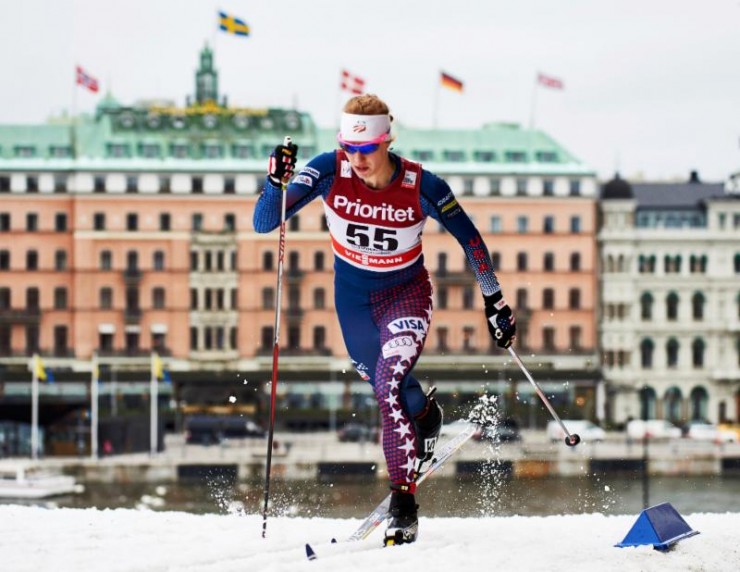
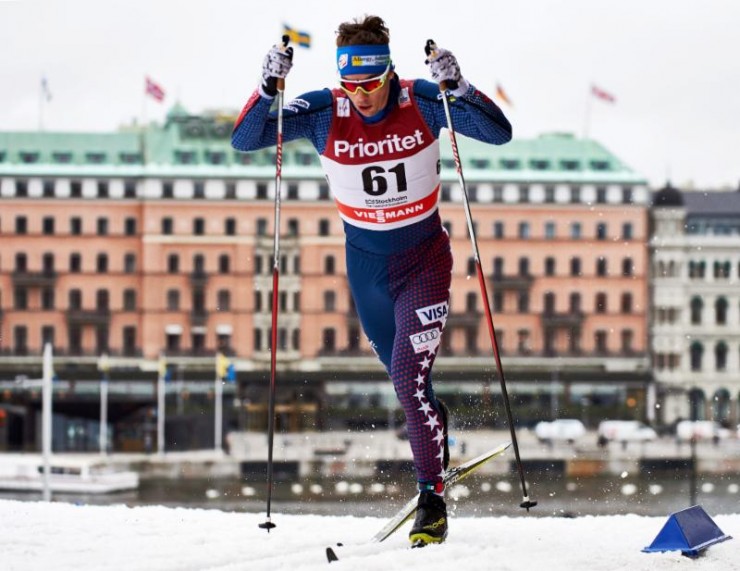
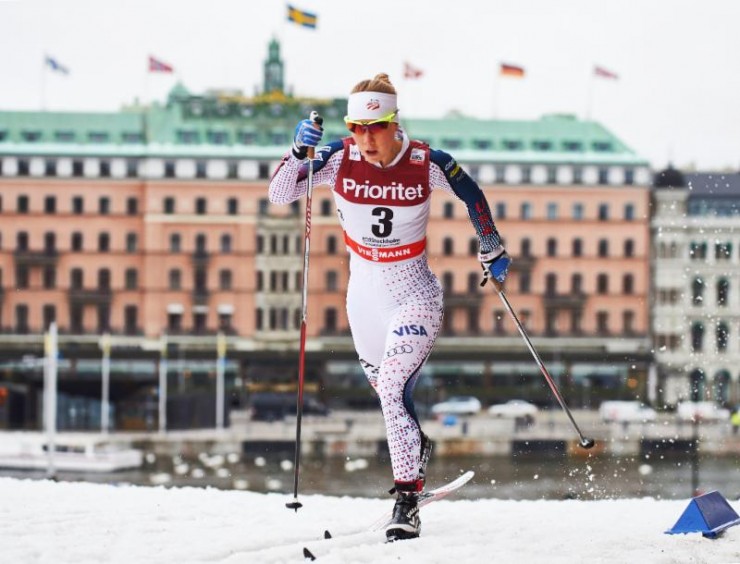

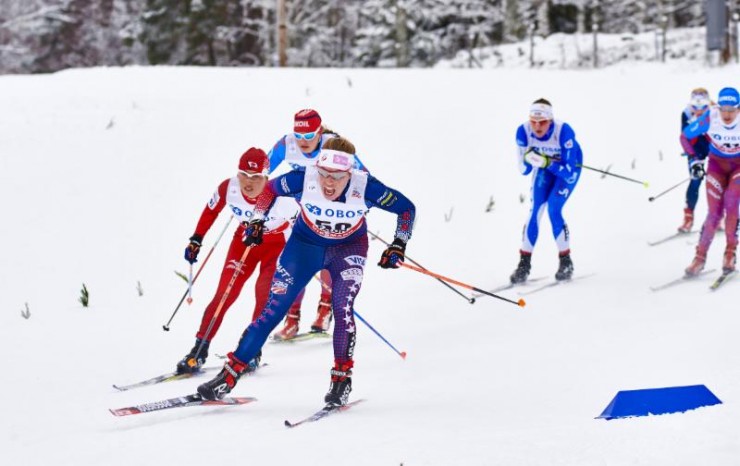


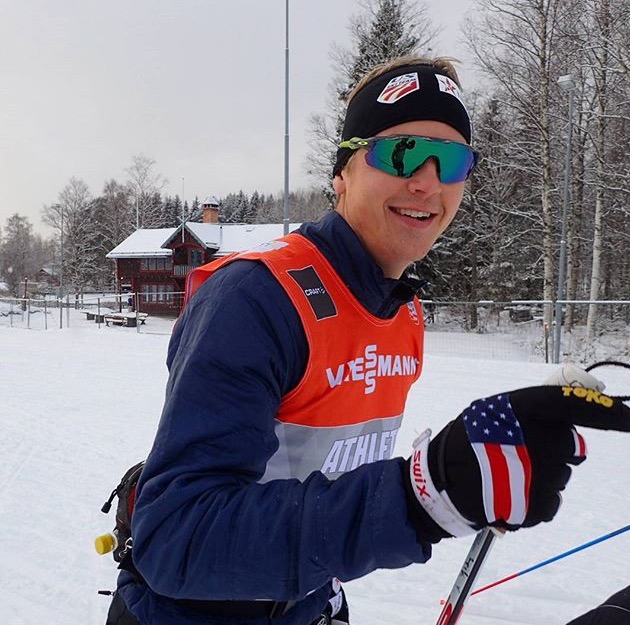
American Birkebeiner Toko Plans
Come check out Toko’s new expanded booth at the Birkie expo. We will have all the waxes, tools, bags, gloves, etc that you might need as well as wax tips and a team of Toko Tech Team members to answer any questions you might have.
Note: This year and in the future, Ian Harvey will not be at the New Moon shop Thursday and Friday, but at the expo. See you there!
CXC Team Mora Vasaloppet Wax Report
Mora Vasaloppet
Downtown, Mora, MN
Saturday, February 13
Forecast:
Overnight low temperature was -17 F, with high winds. Start temperature was -6 F, no wind, clear and sunny
Course Conditions:
Union Street and the lakes were in great shape: firm and fast. The Mora Nordic Center Trails were covered with man-made snow. The interior trails had a thin cover and was very icy
CXC Team:
Two women skied the 48K Skate Race: Natalia Naryshkina (1st); Hilary Patzer (3rd)
Four men skied the 48K Skate Race: Andrew Brown (2nd), Chri Pappathopoulos(3rd),Cory Ellertson (4th), and Nicholas Power (6th)
Ski Preparation and Glide Wax:
Due to the below zero F temperatures, the man-made snow, and the thin and icy conditions of the course, it was important to harden the bases of the skis. I fist cleaned the bases with two coats for Toko HF Hot Wax Black; I followed this with two coats of Toko HF Hot Wax Blue, which has proven to be very durable for cold and aggressive snow conditions. Because of abrasive nature most of the course, I added a third coat of Toko HF Hot Wax Blue and sprinkled Toko X-cold Powder into the warm wax, and blend the Blue and the X-cold together. After scraping and brushing thoroughly, I finished the skis by crayoning Toko JetStream Blue on the base, ironing with a hot iron (320F) with a layer of fiberlene under the iron; I cranyoned a second layer of JetStream Blue on the base while it was still warm and then corked the base smooth with a hand cork. After the skis cooled, I brushed them with a soft nylon polishing brush and polish with a Toko Thermopad.
Results:
The Mora Vasaloppet was the fourth race of the CXC Marathon Cup Series; following the race, both the CXC Team athletes and coaching staff were happy with their skis and their results. Next on the schedule is the American Birkebeiner.
Bruce Manske, CXC Development Coach
CXC Team City of the Lakes Loppet Wax Report
Once again, this past weekends marathon cup races were blessed with last minute snow. Unlike last year, the City of Lakes Loppet was able to utilize full 42k course. Although some parts of course were thin, organizers and volunteers worked hard to put on a great event. For racing, the CXC Team took part in 3 events over the course of the weekend: Friday night sprints, Saturday Classic Marathon, and Sunday Skate Marathon. Those three events were combined to crown Minnetour Champions.
Friday Skate Sprints:
Conditions: We found a mixture of new and farmed transformed snow at the sprint event that took place at the Calhoun Park Village. Course utilized the final bit of trail that would be used for the marathons the next days marathons. An out and back 800m course with a short climb with 180 degree turn at top kept things pretty close in heats. Temperature was around 28 degrees during races.
Glide:
Base Layer: HF Black
Race Paraffin: HF Red
Top Coat: JS Red 2.0 block
Saturday Classic Marathon:
Conditions: Course was a mix of primarily new snow with a little bit of old transformed snow worked into it. Temperatures remained steady in upper twenties but snow still behaved a little colder with new snow. Some dirt in thin spots as well as wind blown snow ice on lakes.
Base Layer: HF Black
Race Paraffin: HF Red
Powder: Jetstream Red 2.0
Structure: Blue Structure on tails
Binder: Toko Green x 1 layer ironed, 1 layer corked on top
Kick: Toko Red x 5 tapered layers, Yellow kicker covered with Red if more kick was needed
Sunday Skate Marathon:
Conditions: Temperatures for Sunday’s skate marathon were between 34 and 40 degrees with periods of sun. Snow conditions were fairly variable over the course from glazed and wet newer snow to icy wind blown. Again, skis picking up dirt was a key factor in choosing wax.
Base Layer: HF Black
Race Paraffin: HF Red – Colder than race temperature but harder wax kept dirt from being picked up.
Powder: Jetstream Red/Yellow mix 1:1
Top Coat: Jetstream Moly Block
CXC Team
Results (Women):
1st Place Minnetour – Natalia Naryshkina (4th title in a row); 1st Sprint,1st Classic, 2nd Skate
2nd Place Minnetour – Alice Flanders; 3rd Sprint, 4th Classic, 1st Skate
CXC Team Results (Men)
1st Place Minnetour – Chris Pappathopoulos; 1st Classic, 2nd Skate
2nd Place Minnetour- Nicholas Power, 2nd Classic, 4th Skate
Kyle Bratrud – 3rd Sprint, 3rd Classic
Andy Brown – 5th Skate
Craftsbury, VT.
10k Skate Individual Start February 6, 2016
Conditions: Hard packed man made corduroy with temps overnight around 17 degrees. Track set up well. Saturday AM the snow remained cold despite temps warming up into the mid 30s. Overcast skies all day. Course held up pretty well for the men except for some corners that were scraped to ice and the one steep climb on the course that turned to sugar.
Toko Wax Used: Toko HF Blue Hardening Underlayer. Toko HF Red. Topcoat: 2.0 Red Block AM.
10k Cl Individual Start February 7, 2016
Conditions: Temps dipped just below freezing overnight. Tracks were groomed early though so they set up quite well. Tracks began to break down during the girls race and became sugar. Tough to kick and finesse was needed to go fast. High temps topped out at 36 degrees F. Some girls and most guys used the double pole technique.
Toko Wax Used: Toko HF Blue Hardening Underlayer. Toko HF Red. Jetstream Red 2.0 Powder. Toko Red 2.0 Block AM.
Eastern SuperTour Wax Report
Both of these venues featured a large amount of man-made snow, which tends to have sharper snow crystals that stay sharp longer than natural snow. Because of this, when we have races on man-made snow we like to add Toko’s Cold Powder into what we test. During these races, we were able to pick up speed of a few of our paraffin layers by hardening them with Cold Powder. Two of our favorite combinations with Cold Powder were an under layer of LF Black and Cold Powder as well as Toko HF Blue and HF Red mixed 1:1 with Cold Powder added before ironing it all in.
Lake Placid Skate Sprint
We used a base layer of Toko LF Black with Cold Powder mixed in to help harden up our ski bases. Coming from California we had been using a lot of red and yellow wax. For an HF layer we used Toko HF Blue and Red mixed 1:1. The forecasted snow came in a bit colder than we were expecting the night before the race. We liked the speed the Toko 2.0 Blue Bloc gave us during the qualifier. As the day moved on the Red Toko 2.0 Bloc came into play for in the heats.
Lake Placid Classic Distance
With a huge number of skiers racing and warming up on a small lap we planned on the tracks warming throughout the day. For the women’s race we used Toko HF Red for a paraffin layer and mixed some HF Yellow into HF Red for the men. We liked the speed the 2.0 Bloc gave us and used the same bloc as our base layers in men’s and women’s races. As the day moved on and the tracks got wetter the 2.0 Helix was running quite well.
Craftsbury Skate Distance
We liked the same base layer of LF Black and cold powder to harden bases as we did in Lake Placid. We found that adding cold powder to the mix helped harden the bases and continued to speed up skis in the man-made snow. For HF base layers we mixed Toko Red and Blue 1:1 and then added cold powder. We mixed the Toko Jetstream Red and Blue powder to great success for a pure fluoro layer.
Craftsbury Classic Distance
We kept the wax the same as the day before in the women’s race, but went with straight Toko Red for an HF layer for the men as the tracks warmed up a bit through the day. We liked the Toko Red 2.0 bloc as a topcoat. By the time most of the men were racing much of the track had become quite icy and we found that the Toko 2.0 Red Helix was working quite nicely. The 2.0 Helix is great to work with because it is so quick to apply, which makes for faster glide testing and more time to focus on kick.
-Spencer Eusden, Sugarbowl Elite Team
Report from Craftsbury Supertour Races
Craftsbury Super Tour Weekend:
Thanks to the wonderful staff and volunteers at the Craftsbury Outdoor Center we were able to have a very competitive weekend of racing in otherwise marginal conditions. Warm weather after the previous Super Tour in Placid meant we had a bunch of manmade snow is a state of extreme transformation. Thursday we were greeted with a nice lake at the bottom of the lower stadium and some serious slush. Manmade snow is quite impressive though, it does a great job draining moisture and becomes stable and quite fast with transformation and re-freezing. Just as a test I threw out skis with Jetstream Yellow Powder and Helix Yellow spray that felt SOOO good thursday afternoon Don’t let anyone tell you slush skiing can’t be fun, just make sure you have an appropriate amount of floros! Both jet yellow powder and helix spray run great with an abundance of moisture in the snow!
By the pre-race day on friday we were faced with fast and loose granular snowpack with most of the moisture from before having drained out or been locked up as temperatures dropped down. Before the race weekend I teamed up with Caldwell Sport to run a number of parrafin tests through paired glide outs on their test skis. I like something that provides a very clear measure of runout speed as well a feel testing during climbing. We testing a number of parrafins from several different brands Friday into the the late evening trying to figure out how drier dirty granular snow would react. In general really cold and really warm parrafins were off the mark. Once clear winner for glide outs was a bit of a hodge podge collection of HF Red, the old Toko Moly and AX 134. This kind of sounds like a crazy mix of different things but like a good klister job it has a bunch of different components working together. HF Red is the base for the parrafin. It is such a safe bet. If it doesn’t win a test, its never far off. The Moly in the mix seemed to like running in the dirty older manmade and the AX 134 always does a great job improving top end speed, especially in the presence of some moisture or glaze (think a classic track with some traffic).
Our ultimate race parrafin ended up being from a different brand. It was a single parrafin intended for dirty transformed snow that provided slightly better slipperiness in climbing over the HF Red/AX-134/Moly combo. Both had equal glide out but I opted to go for an easier application and to focus on topcoats and structure. But again what I like about Toko is how flexible the line can be to suit the snow conditions or course profile. In general I work within the 3 color ranges (Blue, Red, Yellow) and use DLC to either harden and improve climbing and durability or use AX-134 to improve runout and top end speed (think Soldier Hollow Sprint Course). Figure out what sort of under layer (Graphite, Moly or some neutral LF) seems to be running an go from there! If you figure out what the snow seems to want, you can get really close by using the different options to tweak the skis.
Topcoats and structure
After having some good success with roto-fleecing a “slurry” of powder and liquids together at Lake Placid we again decided to test this application method. Having a number of different test pilots on staff we were able to run a full 10 km durability test before both race race starts. The powder/liquid combo ran better throughout the test than burnt in powder alone. Again, when a parrafin seems to be running really well, it seems like torching it with a 180 degree iron to improve “durability” with a powder can be counter productive. With a roto-flece the base of the ski is cool to the touch preserving the beneficial properties of the parrafin while still getting the top end speed of the of the floro powder/liquid.
Structure for both days was a relatively coarse broken hand structure with a light pass with a crossing structure on the tails. In the transformed granular manmade this combo seemed to improve the runout with very little liability climbing.
Overall it was a very solid skate race with Anne Hart taking her first Super Tour win and Erika Flowers rounding out the podium in 3rd place! Congrats ladies!
The following day temperatures and conditions reminded stable. I stuck with our under layer, parrafin and topcoat and really concentrated on nailing down kick. Conditions again were very loose granular snow without enough moisture to freeze conditions hard. Think sugar on snow. We ran a pretty neutral base klister with a warm drywax combo over the top. The klister under layer provided enough of a cushion to soften the kick job on variable snowpack without compromising speed. Again another solid day with a 1st, 2nd, and 6th position in the women’s race. It seemed that ski choice was one of the most important factors as athletes wanted enough camber to keep the wax from dragging but an easy enough finish to lock up kick on variable tracks.
Many men double poled the course with great success. We tried to focus on the best service possible and the result appeared to very solid kick and glide for the few that decided to kick, and fast skate skis for those that double poled. Again, taking the time to dial in ski selection, and the application of the wax was the most important thing for delivering good skis on the weekend.
– Pat OBrien, SMS T2 Head Coach
Mansfield Nordic Club report from Eastern Cup/SuperTour from Craftsbury, VT
More awful winter weather in Vermont, and another move to Craftsbury. That group of groomers, organizers, snow-farmers, skiers, volunteers and leaders have done so much for skiing in New England…what an amazing place!
Saturday’s skate races were on fast corn. It had gotten cold overnight and was supposed to warm to mid-30s during the day. I don’t think it got that warm, and the snow stayed surprisingly dry for all the races.
Toko Tech Team member/MNC member Dave Boucher lives right down the road from me, and earlier in the week he had given me a bag of some old Jetstream Moly Powder. Given the forecast for warming temps and very old, dirty snow, I figured “why not?” and applied it to all the skis. Underlayers were LF BLue followed by HF Blue or HF Blue/Red mix depending on start time, all mixed with a bit of LF Grey.
On race morning the powders were brushed out and I tested blocks, unsurprisingly finding the Blue block best for early racers. Helx Blue felt great in the transformed corn snow and went on over that. The early racers had the Blue Structurite tool down the second half of the ski.
Temps warmed a bit and I figured the snow might start releasing some moisture with all the traffic on the huge open men’s/women’s field. Still, the Blue block was running fast ahead of other options like Jetstream Red block and another company’s block. I took that as a hint and tried yet another block,, a very cold fluoro block which gave the Blue a run for its money. The unique snow conditions definitely kept things interesting and I was glad to take the opportunity to see success from some non-traditional options!
Earlier starters in the open races went on that other block, but by the later men’s starters (approaching 2pm at this point) I bumped it up to a mix of the Blue/Red block, still with Helx Blue spray. The Blue Structurite went over all skis. I raced myself on this combo and I can attest it was great!
The classic races were held in similar conditions. The tracks were icy in the morning with new snow falling, but the colder temps kept it from being a panic situation. All skis had HF Red/LF Grey mixed, and to keep glide simple and focus on kick we rotocorked in Jetstream Red block to all. A goal of mine is to organize testing in such a way that we can start to test glide more on classic days, but that will have to be a plan for the next race!
All skis had a Toko green base klister binder, and another brand’s klister was used for earlier starters (covered with a hardwax from another brand as well). In the afternoon, it was all about the sugar. The conditions were so soft that it seemed kicking was more a matter of having a good cushion rather than a specific wax.
All skis for later racers received some old Toko Multiviola klister dripped in and re-ironed into the Base klister, which really seemed to make kick that much more accessible. Another brand’s klister was used as a final layer but I think nearly any warm klister would have been fine, and most of the kick was coming from the reliable green/multiviola combo underneath.
Photo attached is Aidan Burt racing in the classic event!
– Adam Terko, Head coach Mansfield Nordic Club
Some Awesome Photos from Last Week



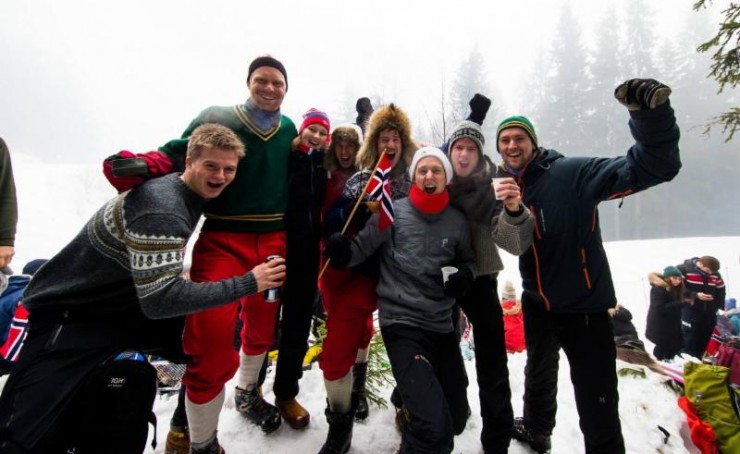




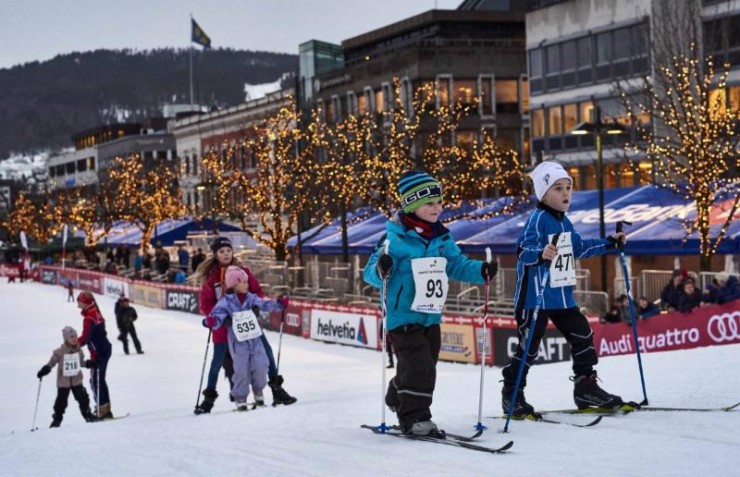
Report from Boulder Mountain Tour
Boulder Mountain Tour 34k skate, Saturday Feb 6. Starting at Galena and finishing down closer to Ketchum. Over the couple days of skiing before the race, we had noticed a significant inversion, where temperatures were much colder down near the finish than they were at the start. There was also some variability between shaded and sunny sections on the course; Ian reported finding wetter mealy snow in the trees, and drier finer snow in open areas where more snow had accumulated and blown into the trail. On race day, weather was sunny, with air temps at Galena start time a little above freezing. Snow remained fairly cold though. As we descended during the race, we saw temps drop into the high teens closer to the finish. For paraffin, I used two layers of Toko HF Blue, then a powder that I selected from test results the day before. Toko 2.0 Blue powder did well in my test, winning in the colder sections on course, but falling back in the warmer areas. I chose a different powder that was more consistent over the variable conditions. I again used the the Toko Blue linear structurite structure, on Ian’s strong recommendation, and topped it with Toko 2.0 Blue block, handcorked, which seemed very good at high speed when I tested it against a handful of other things in the morning. Skis were overall good, Caitlin said that they were a bit slower at the start where it was warmer, but then sped up throughout the race as the course descended into colder areas. And she won!
– Tom Jorgenson, Technician Team Gregg


Boulder Mountain Tour Report
Snow was funky going into the Boulder Mountain Tour. Testing on Thursday and Friday showed pretty cold dry snow in the meadows (which is most of the course) and wetter snow in the trees that “skied wet”. After playing around a lot, we figured out that it was best to wax for the meadows (cold and dry) and then try to make the skis faster in the trees which are more of an issue in the first 10k of the race. A softer “cold ski” ran poorly in the trees compared to a more all around ski (Rossignol S2 for example). Also, we found that the best structure in the cold dry meadows was a “cold” grind, but that finish was a liability in the trees. The structures that we found ran best in the trees were quite slow in the meadows. Easily the best middle ground that we found was using the Structurite Blue bit over a cold grind. This sped things up greatly in the trees, but did not slow the skis at all in the meadows.
We have provided wax service at the Boulder Mountain Tour for 17 years which is saying something as Toko pioneered race wax tips in the US. The experience that we have gained at the Boulder is very important to you the skier. Air temperatures and forecasts would have lead one with less experience to far warmer waxes, but experience has shown us that at the Boulder Mountain Tour the snow falls “cold” and generally at the “sharp end of the race” (the last 15kms) the snow is always colder too. We stuck with our colder recommendation which would have been good even in warmer temperatures and were happy to find colder more arid snow than forecasted.
The wax tip was LF Black, HF Blue, JetStream Blue (applied in the way that we recommended which would have yielded the fastest skis). Structurite Blue bit needed to be applied as well over a cold grind.
We did not recommend AX134 or XCold powder mixed with HF Blue because they did not test as well and for race day we did not anticipate them being as good as straight Blue. Also, HelX Blue tested worse all week than a properly applied JetStream Blue (ironed on with a fiberlene sheet under the iron which yielded the best skis) even when applied over the JetStream Blue, so we did not recommend it.

previous
Abramova Waives B-Sample; Second Athlete Tests Positive as IBU Mulls Sochi Testing
next















